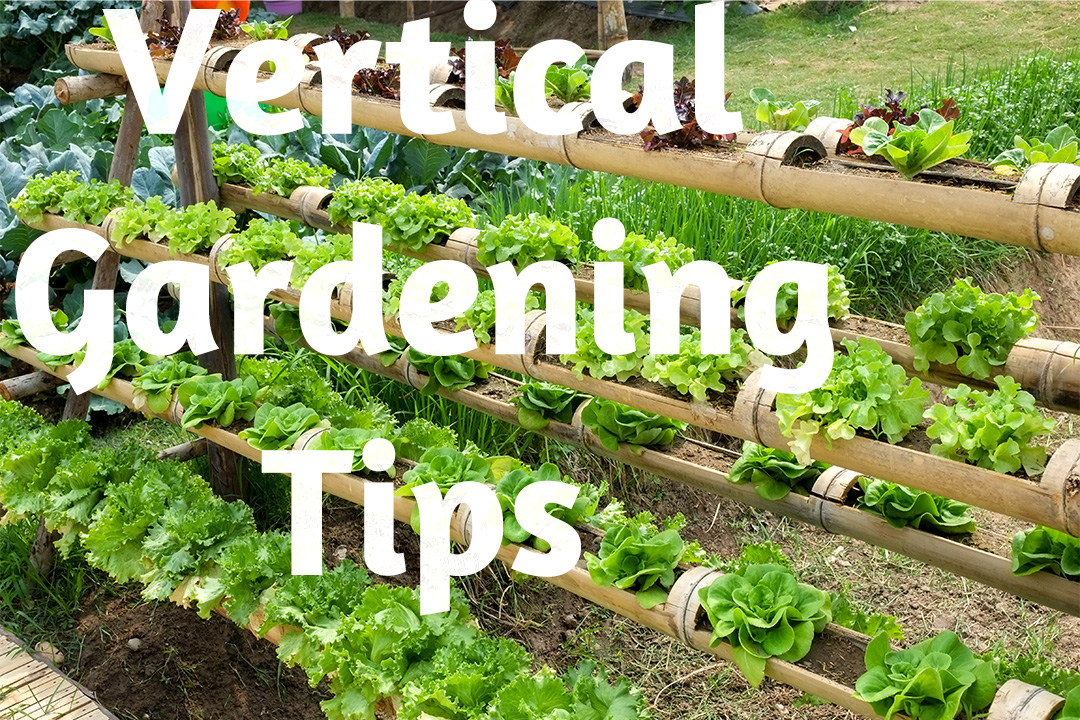Need More Space? Try Vertical Gardening
Feb 13th 2023
If you love gardening but are running out of space to grow food or flowers, there is a solution that is simpler than building another garden bed. Given today's inflated property prices, it's also a heck of a lot less expensive than buying more land.
Going vertical can give your garden, landscape, or patio an artistic twist while adding dramatic appeal and beauty. Best of all, growing up rather than sideways will enable you to grow more food and flowers. And if you use and love herbs, vertical gardening is every bit as effective.
Growing vertically provides a solution to space-starved gardeners running out of room on our increasingly crowded planet. Flowering vines on the south-facing side of your garden fence or house will provide an area for plants that do well with intense mid-day sun. Good candidates for such locations include espaliered roses, grapes, and fruit trees.
Veggies and Flowers
In your vegetable garden, you can use the south-facing fence for planting peas, beans, and squash as well as luffa, berries, and melons to get plenty of southern exposure. You can train these plants to run up your fence rather than across your raised bed or garden plot.
If you have a solid wooden fence or building adjacent to your garden area, running string or wire attached to nails or screws vertically or horizontally will enable climbing plants to flourish.
Flowering vines are available in an astonishing array of colors. Some beautiful picks include clematis, purple passionflower vine and trumpet vine as well as moon flowers and morning glories. These all can be trained to climb on an arching redwood trellis supported by 4x4 wooden posts. You can also attach the trellis to the side of a building.
Edibles like sugar snap peas, luffa, gourds, and squash are useful vertical-climbing plants that can add to the production of your garden areas. You can make or buy wooden stakes or poles that can be wired together at the top to make a teepee-like structure.
A wooden arbor you can walk through on your way in and out of the garden is another vertical accent that will create a tall, artful focal point anywhere in your landscape. Sweet-smelling honeysuckle or climbing roses will add a visual and delightful aromatic accent as you enter this area.
If you have a pergola or covered shade area in your yard, putting large and tall ceramic planters next to the base of the supporting posts and planting climbing veggies or flowering vines in them can give you a harvest of beautiful hanging squash, melons and cucumbers. Grapes and vining flowers can also grow to their full glory this way.
Up With Flowers
Three types of fast-growing and flowering vines make great choices for attracting pollinating butterflies, hummingbirds and bees. Each of these will become very drought-tolerant after the first year.
These include chaparral clematis (Clematis lasiantha), with its cream-colored flowers; Western white clematis (Clematis ligusticifolia), with its late summer flowers; and California morning glory, producing delicate white and pink flowers. These flowering vines will all cover fences, climb pergola support poles, and cover the top of a pergola, giving you sweet shade during the hot, dry summer as well as gorgeous looks.
Adding levels to your landscape, deck or vegetable garden will give you more room to grow. Visually, it will give your property variety and a beautiful dimension.
Think of adding a stone wall or crushed gravel pathway to turn your flower garden into a botanical garden. Add a trellis and grow vining roses for a bright burst of color. If you do some searching online, you can make the entry to your home, backyard or garden area look especially inviting.
Growing Indoors
Indoor farming in greenhouses, high tunnels or large metal buildings with very efficient lighting systems has recently come into vogue. With these methods, gardeners can grow plants vertically using hydroponic systems or drip irrigation.
Water can be piped in and dripped from above or below. This method of farming uses 95% less water than conventional farming, has a much smaller footprint and can produce the highest-quality crops using fertilizer injectors and organic, water-soluble fertilizers.
These crops are protected from animals and insects, and you can harvest and replant on a weekly basis. The plants' environment is controlled to provide optimal growing conditions for their benefit.
Public Displays
Public vertical gardens are being constructed and displayed all over the world. The sides of buildings and bridges covered completely with countless species of plants arranged to complement each other and the structures they are on can be breathtaking. In San Francisco, the inside atrium areas of downtown businesses provide onlookers a visual feast, with flowering walls of plants going up three or four stories in some cases.
If you have run out of gardening area or just have no garden area at all, it is still possible to grow edibles or raise beautiful flowers. You can simply search YouTube or Google with the search term "vertical gardens."
Many suggestions and ideas will come up. It really doesn't matter where you live. This smart type of gardening can be done anywhere.
Once you have chosen your location, make sure there is a water source nearby (faucet or hose bib) where you can attach a timer and dripline. DripWorks.com can provide a catalog, advice, videos and a chat service. Experienced and friendly customer service personnel are on the phones Monday through Friday. They will help you pick out the right parts for the most efficient watering system, ensuring your success.

